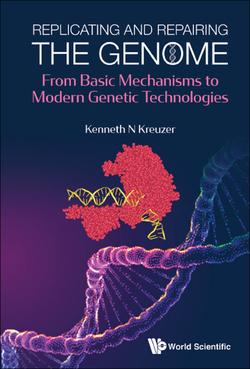Читать книгу Replicating And Repairing The Genome: From Basic Mechanisms To Modern Genetic Technologies - Kenneth N Kreuzer - Страница 37
На сайте Литреса книга снята с продажи.
3.8Summary of key points
Оглавление•The circular E. coli chromosome is replicated by two oppositely oriented replisome complexes that each traverse the DNA at a speed of about 1000 base pairs per second.
•The heart of the E. coli replisome is the DNA polymerase III complex, which contains the multi-subunit polymerase, the clamp loader and clamp.
•The sliding clamp encircles the DNA and allows DNA polymerase to synthesize long stretches of DNA without falling off the template (i.e., increasing polymerase processivity).
•The five-subunit clamp loader harnesses ATP binding and hydrolysis to crack open the clamp ring structure and load the clamp onto DNA at primer-template junctions.
•The bacterial helicase is a hexamer that travels along the lagging-strand template, associated and interacting with both the bacterial primase and the leading-strand polymerase.
•The E. coli replisome can continue past the site of lagging-strand damage, leaving a short single-stranded region containing the damaged base.
•E. coli ssDNA-binding protein is a tetramer that protects ssDNA at the replication fork, prevents formation of deleterious secondary structures, and interacts with other proteins in the replisome.
•DNA polymerase I replaces ribonucleotide residues from Okazaki fragments, and DNA ligase seals the remaining nicks.
•E. coli and other bacteria have multiple pathways for restarting replication and otherwise rescuing replisomes that have encountered serious problems such as blocking lesions and breaks.
